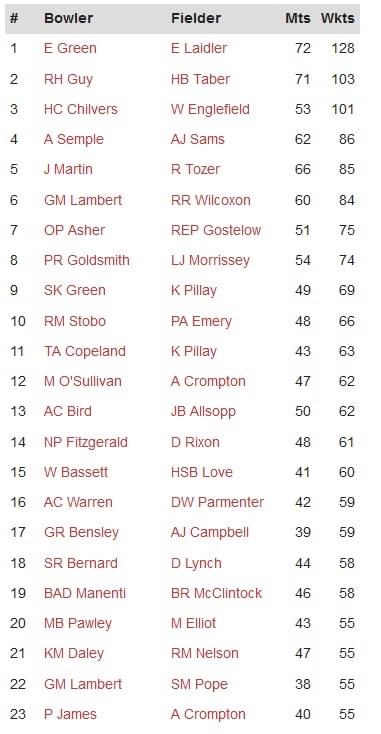General
Recent Activity
last year

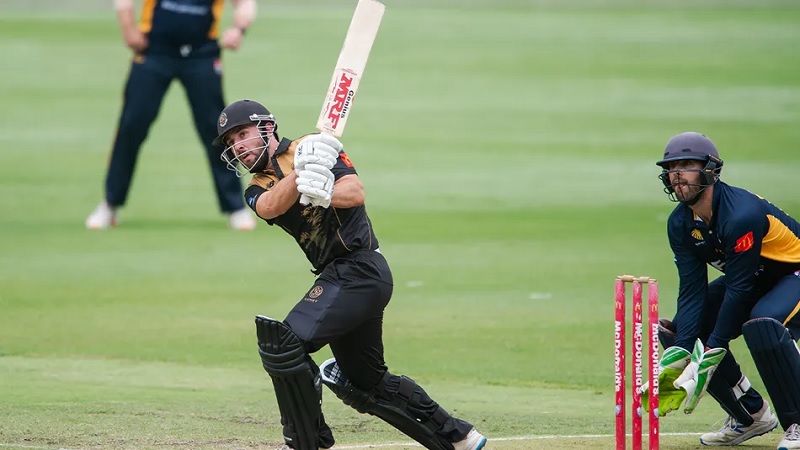
The 2023-24 men’s NSW Premier Cricket competition will commence this Saturday, with players from all 20 first-grade teams suiting up in club colours to launch their Kingsgrove Sports T20 Cup campaigns.

Cricket NSW
71 Likes
102 Followers
102 Followers

The 2023-24 men’s NSW Premier Cricket competition will commence this Saturday, with players from all 20 first-grade teams suiting up in club colours to launch their Kingsgrove Sports T20 Cup campaigns.
It is set to be a fast start to the new season, with all five preliminary rounds of the T20 Cup scheduled to be played across the next two weekends, followed closely by a finals series throughout October and the tournament decider booked in for Sunday November 5.
The popular twenty-over tournament takes a new shape this year, with the draw now consisting of four pools made up of five randomised teams, as opposed to the previous structure that saw the competition divide into two conferences consisting of the same clubs year on year.
https://www.cricketnsw.com.au/news/3690137/mens-nsw-premier-cricket-season-starts-with-short-format-schedule
Read More
last year

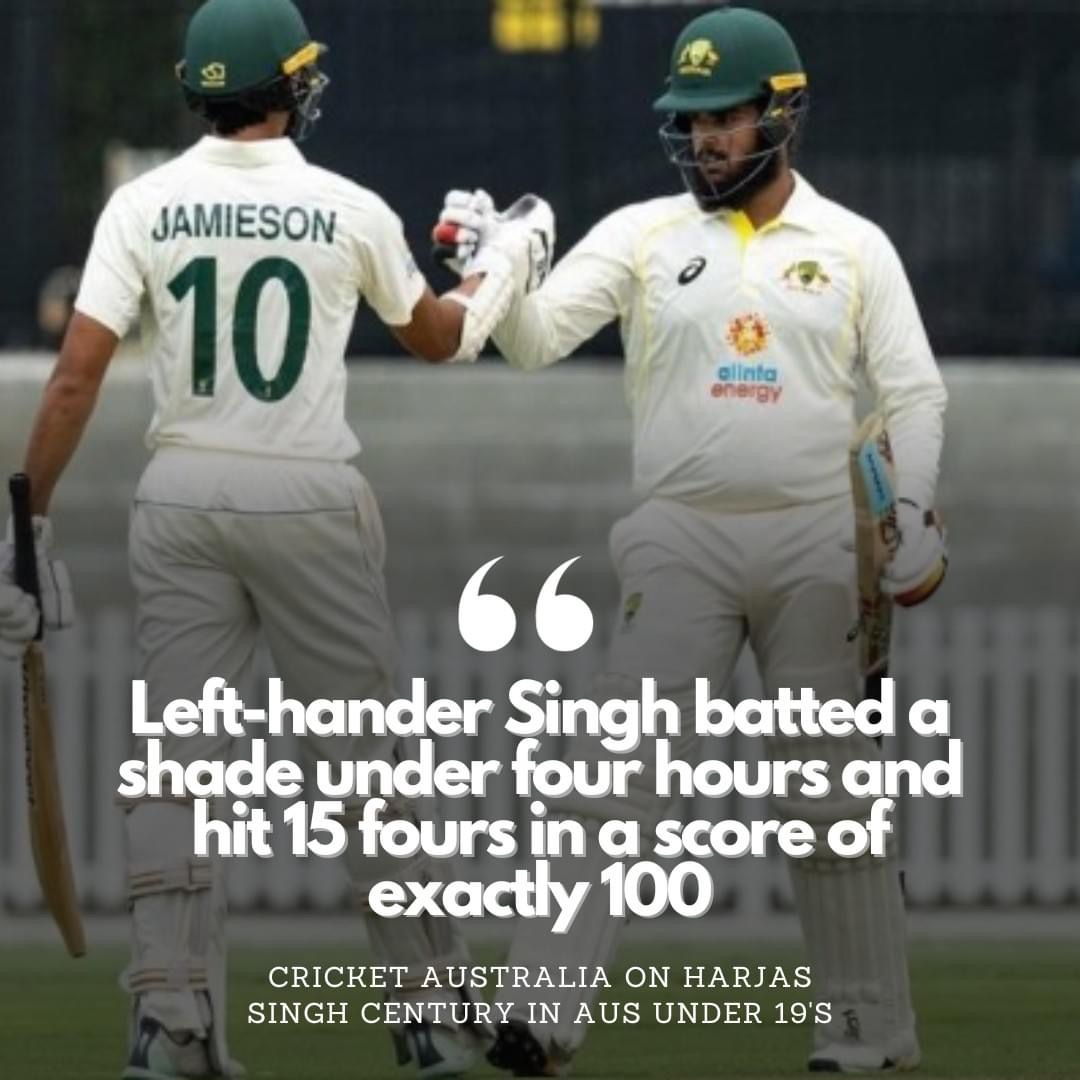
If you haven't heard, its been a big couple of days for Harjas Singh!

Western Suburbs District Cricket Club Sydney
Sydney, New South Wales, Australia
69 Likes
92 Followers
92 Followers

If you haven't heard, its been a big couple of days for Harjas Singh!
First off scoring a century in the first innings of the 2nd test between the Australian and England Under 19's. Batting at three Harjas played a brilliant innings hitting the pace bowlers square off the wicket and being aggressive against the English's spinners.
He was also announced as one of the recipients of Cricket NSW Basil Sellers Scholarships. Founded by Cricket NSW Vice Patron and Life Member, Basil Sellers AM, the Scholarship Program aims to provide the state’s best emerging cricketers with the skills and opportunities needed to effectively transition to NSW contracted programs.
Well Done Harjas - Goodluck with the rest of the test match, safe flight back and eager to see you in black and white soon!
Read More
Partner Sponsors
last year
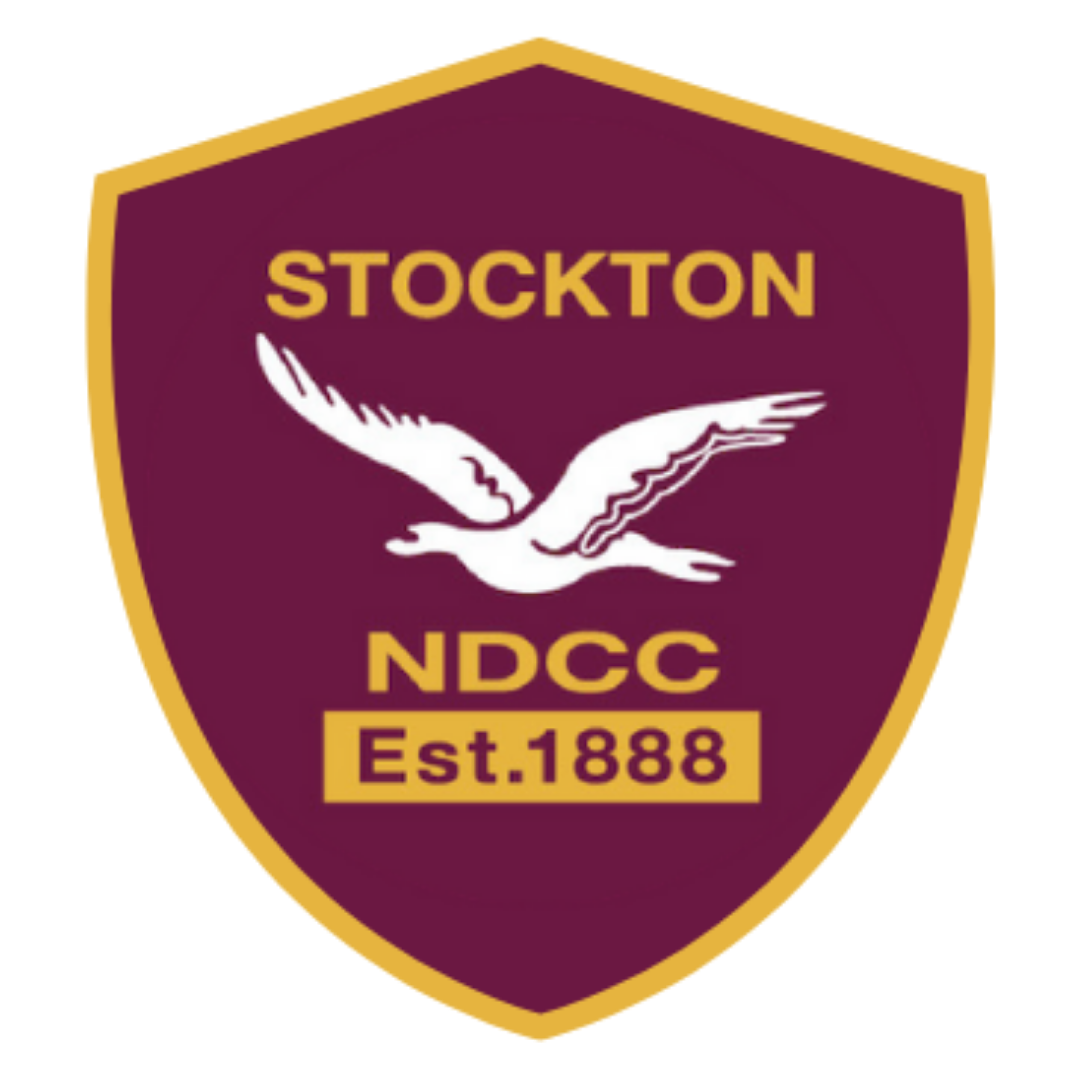
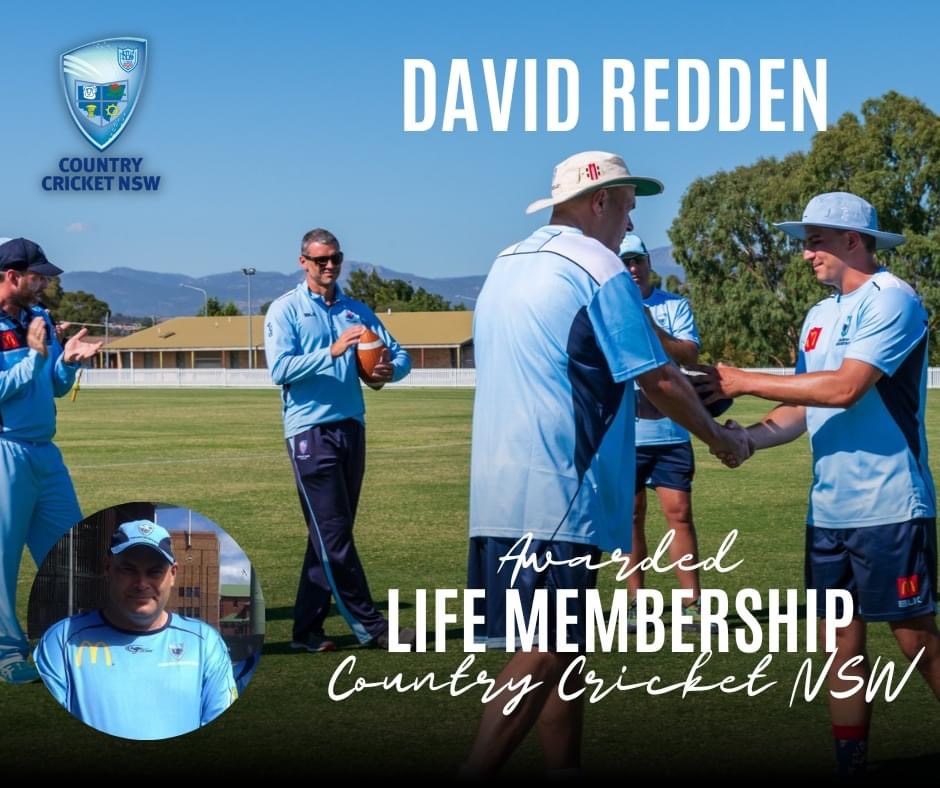
Stockton & Northern Districts Cricket Club is proud to announce that David Redden has been awarded Life Membership of Country Cricket NSW.

Stockton and Northern Districts Cricket Club
Newcastle, NSW, Australia
6 Likes
1 Followers
1 Followers

Stockton & Northern Districts Cricket Club is proud to announce that David Redden has been awarded Life Membership of Country Cricket NSW.
This honour could not go do someone more deserving after his tireless work and selfless contribution to cricket in country NSW over many years.
Congratulations David!
Read More
last year

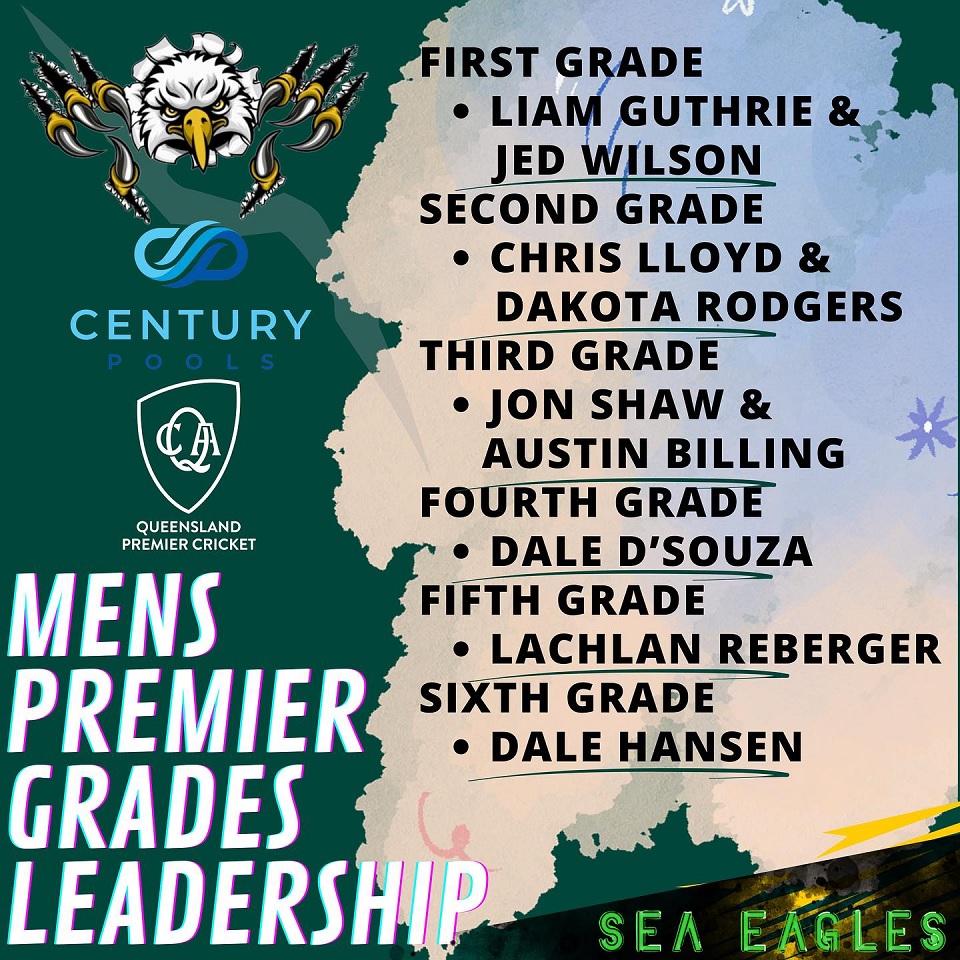
Announcement: Wynnum Manly Men's Premier Cricket Leadership Captains

Wynnum Manly District Cricket Club
Brisbane, Australia
12 Likes
1 Followers
1 Followers

Announcement: Wynnum Manly Men's Premier Cricket Leadership Captains
WMDCC are thrilled to introduce the leadership captains for our Men's Premier Cricket teams for the upcoming season. They will be leading our teams on and off the field, setting an example for our male cricket playing members.
These captains bring a wealth of experience, sportsmanship, and passion to our cricketing family. Join us in congratulating them on their new leadership roles, and let's rally behind them as we strive for success in the upcoming season.
Read More
last year


Gage Roads join Waratahs corporate family

Manly Warringah District Cricket Club
Sydney, New South Wales, Australia
34 Likes
19 Followers
19 Followers

Gage Roads join Waratahs corporate family
Gage Roads have continued their push into the Northern Beaches, with the Manly Warringah Waratahs delighted to confirm their partnership with the club.
They are locked in as one of the club partners for the next 3 seasons.
Proudly Independent and Australian owned, Gage Roads started their journey over 15 years ago in the Western Australia. In fact, they were named after the strip of ocean that separates Rottnest Island and Fremantle.
They are constantly inspired by their coastal home and the Australian love of the beach, and it has helped inspire then to brew some of Australia’s best craft beer and cider.
https://manlycricket.com/gage-roads-join-waratahs-corporate-family/
Read More
Partner Sponsors
last year


Cricket NSW has announced the 13 talented young cricketers who will be inducted into the Basil Sellers Emerging Player Program for the 2023/24 season, along with nine emerging ‘Tier Two’ scholars who have also been granted access to the world-class development program.

Cricket NSW
71 Likes
102 Followers
102 Followers

Cricket NSW has announced the 13 talented young cricketers who will be inducted into the Basil Sellers Emerging Player Program for the 2023/24 season, along with nine emerging ‘Tier Two’ scholars who have also been granted access to the world-class development program.
This season will herald the introduction of a two-tiered system for the first time in the program’s 17-year history.
Founded by Cricket NSW Vice Patron and Life Member, Basil Sellers AM, the Scholarship Program aims to provide the state’s best emerging cricketers with the skills and opportunities needed to effectively transition to NSW contracted programs.
https://www.cricketnsw.com.au/news/3682064/basil-sellers-emerging-player-program-scholars-announced
Read More
last year

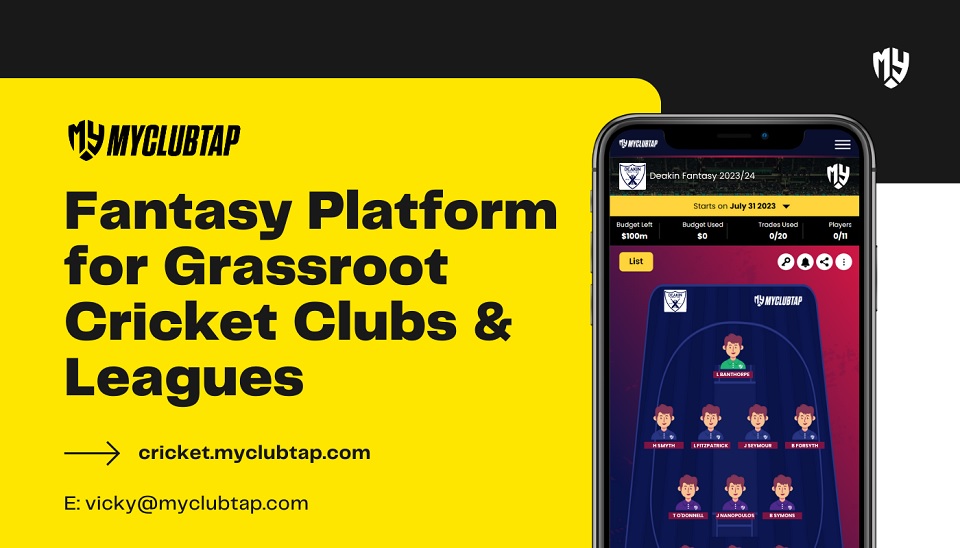
MyClubtap, empowers cricket clubs & leagues to have their own custom fantasy cricket platform, that is easy to setup and provides advanced setting customization's to meet the varying needs of grassroot cricket clubs & leagues.

Vicky Goyal
Director
Melbourne, Australia
4 Likes
1 Followers
1 Followers

MyClubtap, empowers cricket clubs & leagues to have their own custom fantasy cricket platform, that is easy to setup and provides advanced setting customization's to meet the varying needs of grassroot cricket clubs & leagues.
Whether you are a cricket club, a league, an association, an independent or a corporate cricket competition, with MyClubtap, it is now a breeze to setup, manage and have your own personalized fantasy cricket game featuring players of your own club or league!
Any cricket club or league can signup for an admin account and get access to it's own dedicated Admin Hub and get started on setting-up and running it's own fantasy game in minutes, with access to all basic and advanced features of MyClubtap.
https://www.cricconnect.com/profile/1218/vicky-goyal/blog/1472/myclubtap-custom-fantasy-platform-for-grassroot-cricket-clubs-and-leagues
Read More
last year

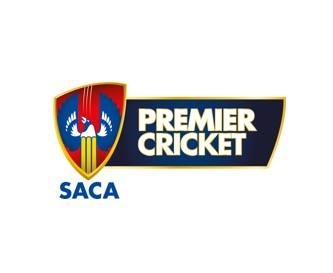
South Australia Men's Premier Cricket Clubs - player movements, gains and losses for 2023-24

South Australia Cricket Association
Adelaide, South Australia, Australia
2 Likes
2 Followers
2 Followers

South Australia Men's Premier Cricket Clubs - player movements, gains and losses for 2023-24
As the 13 South Australia Premier Cricket Clubs start their preseason preparations for the 2023-24 season the rumour mill is in full swing in terms of player movements and clubs gains and losses.
We’ve been in touch with the representatives of each club and here’s what we’ve been able to establish so far.
If there's any mistakes, we apologise upfront.
https://www.cricconnect.com/profile/940/south-australia-cricket-association/blog/1327/south-australia-mens-premier-cricket-clubs-player-movements-gains-and-losses-for-2023-24
Read More
Partner Sponsors
last year

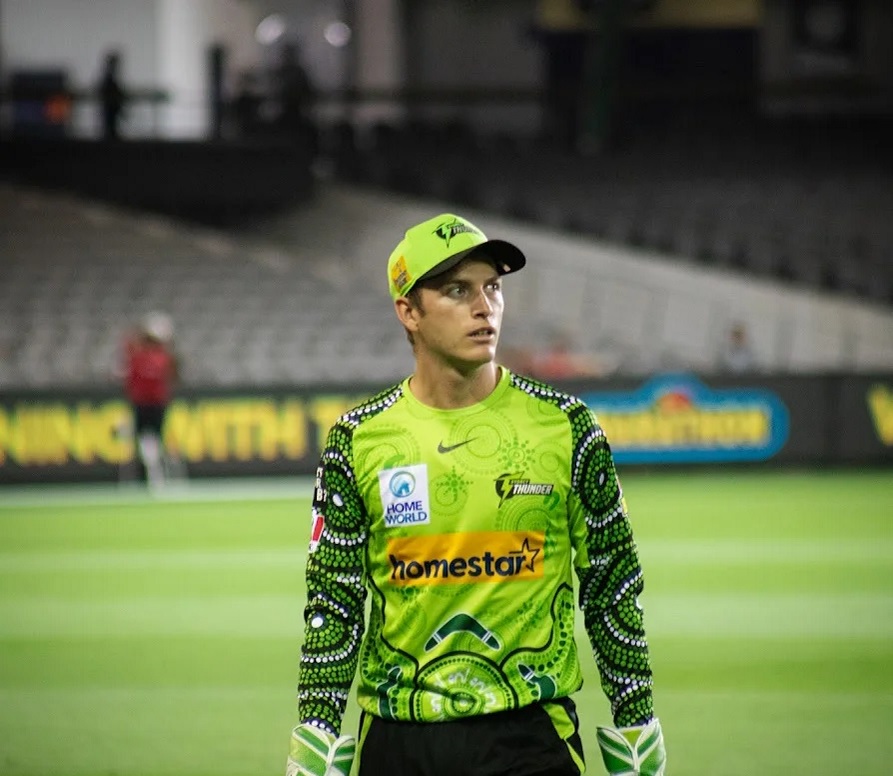
Unleash the Power of Your Story! Inspire, Connect, and Transform with 'Not Another Presentation'

Baxter Holt
Business Owner
Perth, Western Australia, Australia
2 Likes
0 Followers
0 Followers

Unleash the Power of Your Story! Inspire, Connect, and Transform with 'Not Another Presentation'
Aspiring cricketers, sports enthusiasts, and career-driven individuals, listen up!
Are you tired of uninspiring presentations? Want to captivate your audience and leave a lasting impact? Look no further than 'Not Another Presentation', My unique approach combines the power of storytelling with positive messaging, providing valuable lessons learned from playing with Cricket NSW and the Sydney Thunder.
In a world filled with Instagram filters and fake personas, it's time to embrace authenticity and listen to understand. My presentations will challenge your audience's perception, helping them see beyond the surface and uncover the real stories behind success.
https://www.cricconnect.com/profile/1212/baxter-holt/blog/1460/unleash-the-power-of-your-story-with-baxter-holt
Read More
last year

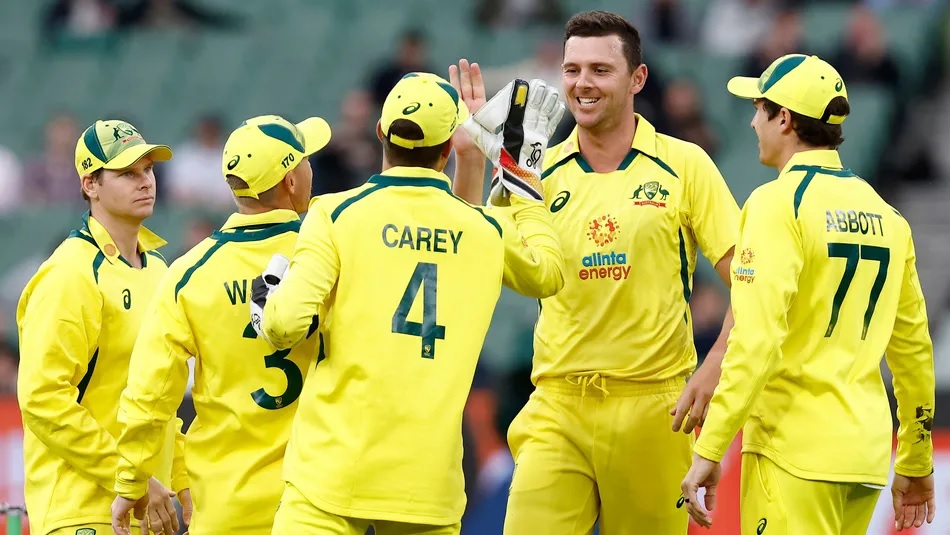
Cricket Australia Announce 2023 ODI World Cup Squad

Cricket Australia Community
Melbourne, Australia
24 Likes
21 Followers
21 Followers

Cricket Australia Announce 2023 ODI World Cup Squad
Sean Abbott has earned a maiden World Cup berth as Australia named an allrounder-heavy 15-player squad without Marnus Labuschagne for next month's tournament in India.
Although unsurprising given his initial snub from the touring party for the South Africa ODI series, Labuschagne's omission underlines the Aussies' preference for versatility in the 50-over format with three seam-bowling allrounders picked instead.
In fact, Cameron Green was one of the four allrounders selected capable of batting in the top seven (along with Mitch Marsh, Marcus Stoinis and Glenn Maxwell), while frontline bowlers Ashton Agar and Abbott are also capable batters.
https://www.cricket.com.au/news/3673915/australia-odi-world-cup-squad-india-abbott-labuschagne-cummins-agar-starc-maxwell-green-inglis-smith
Read More
last year


In a boost for Kookaburra Victorian Premier Cricket, the Melbourne Cricket Club will host two matches this season at Australia's premier sporting venue, the Melbourne Cricket Ground.

Cricket Victoria
Melbourne, Australia
2 Likes
3 Followers
3 Followers

In a boost for Kookaburra Victorian Premier Cricket, the Melbourne Cricket Club will host two matches this season at Australia's premier sporting venue, the Melbourne Cricket Ground.
This will be the first-time men’s Premier Cricket has been played at the ground since January 2010, and the first-time ever women’s Premier Cricket has been played on the hallowed turf.
The first of the two matches will take place on Sunday 26 November when Melbourne’s women’s 1st XI will host Box Hill Cricket Club in a One Day game, whilst defending 1st XI premiers Melbourne will play Kingston Hawthorn in a men’s One Day game on Saturday 20 January.
Cricket Victoria’s General Manager – Premier Cricket Liam Murphy said it’s another great opportunity for Premier Cricketers to play on elite cricket grounds.
https://www.cricketvictoria.com.au/news/premier-cricket/premier-cricket-returns-to-the-g/
Read More
Partner Sponsors
last year

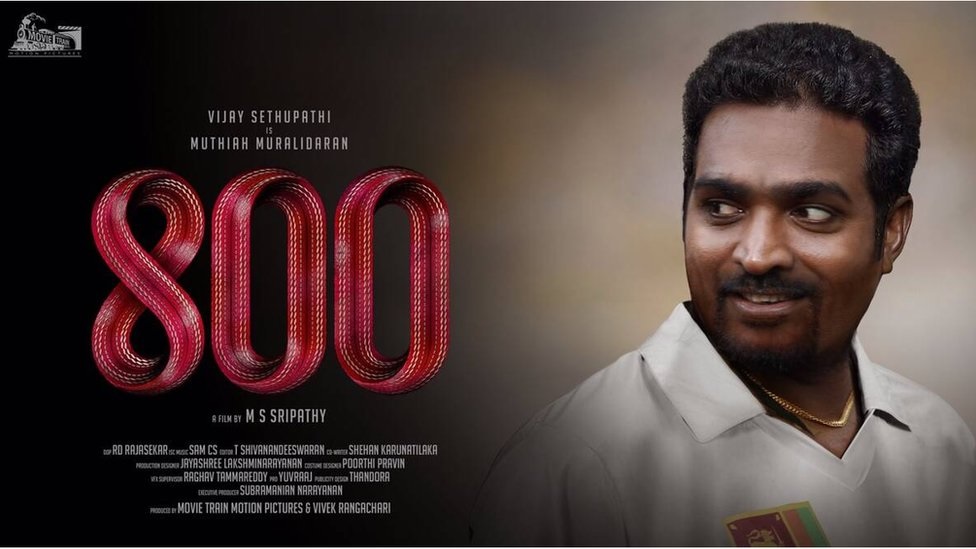
Mural biopic "800" to be released on October 6

Bipin Dani
Mumbai, India
7 Likes
0 Followers
0 Followers

Mural biopic "800" to be released on October 6
Sri Lanka's legendary cricketer Muthiah Muralitharan's biopic "800" will be released on 6th October 2023. This was revealed by Sethumadhavan, one of the three directors of the production company.
"We released the trailer today (Tuesday) and it was unveiled by another great cricketer Sachin Tendulkar. On the occasion, former Sri Lankan captain SAanath Jayasuriya was also present".
"All three has important discussions and shared their days of glory playing with and against each other".
The 51-year-old Sri Lankan off-spinner ended his Test career with 800th wicket on July 22, 2010 in the Test match against India.
Incidentally, Murali is also a son in law of India. He married Madhimalar Ramamurthy, a Chennai native, on 21 March 2005. Madhimalar is the daughter of the late Dr S Ramamurthy of Malar Hospitals in Chennai.
The roles of Murali and his wife are being played by Madhur Mittal and Mahima Nambiyar. Both were present on the occasion.
The shootings of the biopic took place in India, Sri Lanka and England.
"Originally, the film was made in Tamil and dubbed in Telugu and Hindi. We are planning to make this in English also and the movie will be telecast in other countries also, where the game of cricket is popular", the director concluded.
Read More
last year


Former NSW and Australian cricket stars Belinda Haggett and Peter Toohey were confirmed as Cricket NSW Life Members at the association’s Annual General Meeting on Monday night.

Cricket NSW
71 Likes
102 Followers
102 Followers

Former NSW and Australian cricket stars Belinda Haggett and Peter Toohey were confirmed as Cricket NSW Life Members at the association’s Annual General Meeting on Monday night.
Alongside Haggett and Toohey being bestowed with Life Membership at the meeting that was held at Cricket Central, another former NSW and Australian representative, Stuart Clark, was nominated and elected as a new member of the CNSW Board of Directors.
Clark, who played 24 Tests and 39 One-Day Internationals for Australia, along with 171 matches for NSW, is currently the CEO of Softball NSW, having held high profile administrative roles at the NSW Rugby League, with the Sydney Sixers and in media.
He was also named last week as an NSW Blues selector and continues to play an active role in Sydney Premier Cricket.
https://www.cricketnsw.com.au/news/3671211/haggett-toohey-awarded-life-membership-clark-joins-cnsw-board
Read More
last year

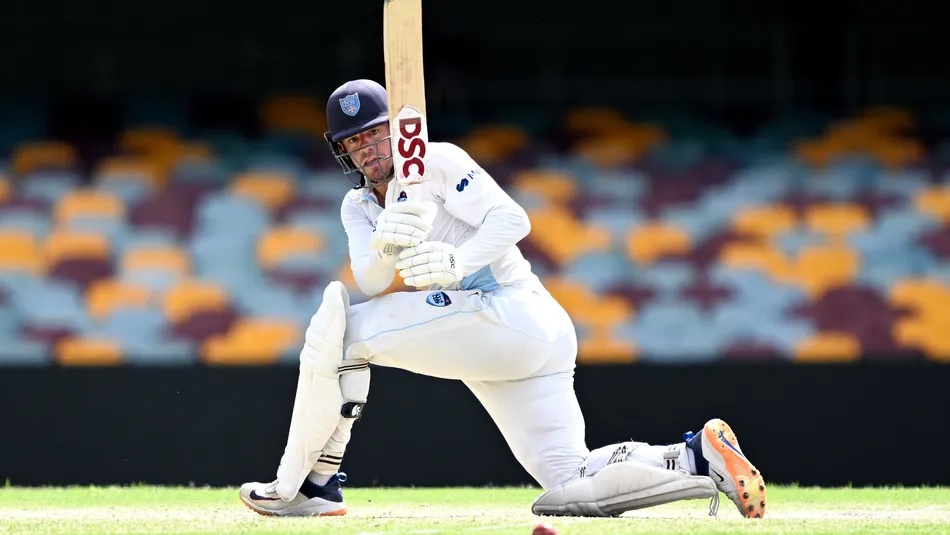
After a very disappointing season last summer, the NSW Men’s Cricket team will go ‘back to the future’ in 2023/24 with a host of familiar faces appointed to key roles in a restructure set to reinvigorate the Blues.

Cricket NSW
71 Likes
102 Followers
102 Followers

After a very disappointing season last summer, the NSW Men’s Cricket team will go ‘back to the future’ in 2023/24 with a host of familiar faces appointed to key roles in a restructure set to reinvigorate the Blues.
In a series of moves designed to restore NSW to the top of domestic cricket, the Blues will look to the support of a group of former players with almost 1000 appearances for NSW and the state’s Big Bash clubs.
On the field, veteran former skipper Moises Henriques will be the all-format captain, ready to add to the 20 previous matches he led the Sheffield Shield side across seven different seasons. He has also captained the Blues One-Day team on 16 occasions.
https://www.cricketnsw.com.au/news/3660811/blues-go-back-to-the-future
Read More
Partner Sponsors
last year

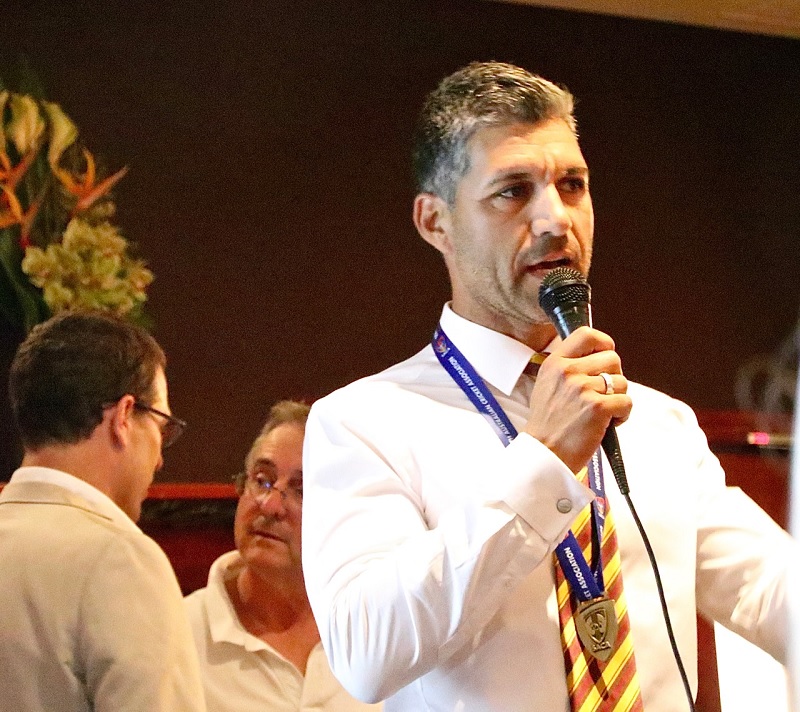
Voting for nominations on the SACA Board 2023 is now open, and I am excited to have the opportunity to be in the election ballot.

Jamie Panelli
Financial Planner
Adelaide, South Australia, Australia
1 Likes
0 Followers
0 Followers

Voting for nominations on the SACA Board 2023 is now open, and I am excited to have the opportunity to be in the election ballot.
I appreciate we have many passionate cricket followers and many members who care about South Australian Cricket, so if you are as committed as me to make a difference, I would love your support.
You would have received an email from ‘Corpvote Voting Services’, if you could kindly take the time to vote and offer your support for my election, I would be very grateful. You will need your member number when voting.
If you could also pass this message on to your friends, family and colleagues that are fellow SACA Members, I would also really appreciate your help.
Since starting as a young cricketer at Kensington District Cricket Club, I have had the privilege of being raised in a strong cricket environment in SA. Along the journey I have created wonderful relationships with our cricket community and lovers alike, learning what it takes to be involved with a successful cricket organisation, the work it takes to continue to be successful and the need to adapt to change on and off the pitch.
https://www.cricconnect.com/profile/1205/jamie-panelli/blog/1446/nominations-on-the-saca-board-2023-is-now-open-and-im-excited-to-be-in-the-election-ballot
Read More
last year

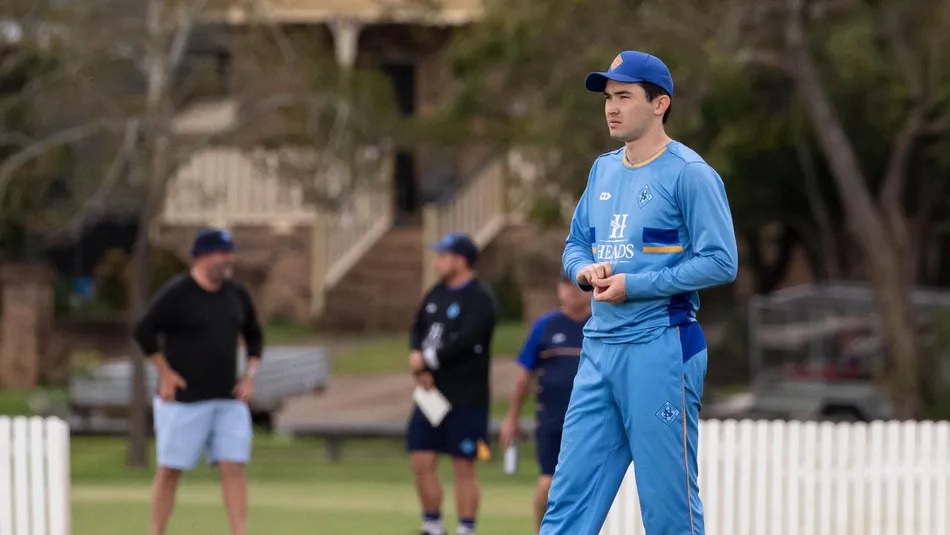
The KFC T20 Max competition has already proven a happy hunting ground for Big Bash clubs as it delivers player exposure in a competitive environment. But there are also wider opportunities afoot, with Norths first grader Kendel Fleming taking the role of Player Manager to a new level. CAM VELLACOTT has an in depth look at a Queensland Premier Cricket success story.

Queensland Cricket
Brisbane, Queensland, Australia
15 Likes
25 Followers
25 Followers

The KFC T20 Max competition has already proven a happy hunting ground for Big Bash clubs as it delivers player exposure in a competitive environment. But there are also wider opportunities afoot, with Norths first grader Kendel Fleming taking the role of Player Manager to a new level. CAM VELLACOTT has an in depth look at a Queensland Premier Cricket success story.
Kendel Fleming | A Path of his Own
https://www.qldcricket.com.au/news/3657644/t20-max-not-just-for-players
Read More
last year


Queensland Registrations Surge During Play Cricket Week

Queensland Cricket
Brisbane, Queensland, Australia
15 Likes
25 Followers
25 Followers

Queensland Registrations Surge During Play Cricket Week
Participation in cricket grew by over 3700 registrations this play cricket week, that was enabled by more than 80 Community cricket staff-led activations across schools, communities, and clubs. The impact was profound, as these initiatives engaged over 50,000 children, offering them a first-hand experience of the sport's joys.
Play Cricket Week commenced with grandeur at Allan Border Field, as Queensland Cricket hosted a launch party, inclusive of a Bluey Live Interactive Experience, an attraction that drew an impressive crowd.
https://www.qldcricket.com.au/news/3656814/queensland-registrations-surge-during-play-cricket-week
Read More
Partner Sponsors
last year

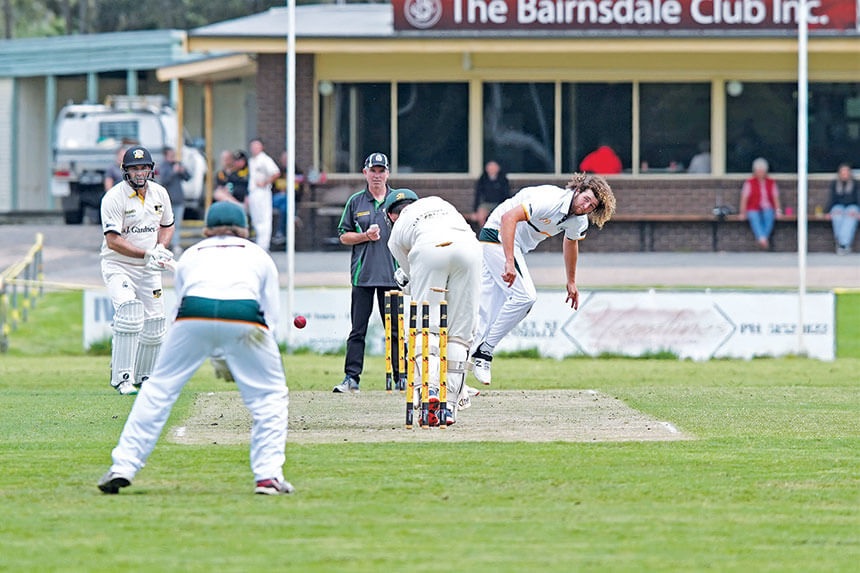
Adapting Grassroots Cricket Clubs to the Digital Era: The Intersection of Tradition and Innovation

Luki Soeradinata
Business Development Manager
Singapore, Singapore
45 Likes
2 Followers
2 Followers

Adapting Grassroots Cricket Clubs to the Digital Era: The Intersection of Tradition and Innovation
Grassroots cricket, the heart and soul of the sport, has a unique charm that resonates deeply within local communities around the globe. It is more than just a game; it's a tradition, a passion, and a community builder that brings together people from all walks of life. From the village green to the urban park, grassroots cricket clubs serve as the nucleus of cricketing activity, fostering local talent while nurturing lifelong friendships. To all grassroots cricket clubs out there: the digital era is here, and it's not going away. In fact, it's only going to become more integral to how we operate.
https://www.cricconnect.com/profile/803/luki-soeradinata/blog/1440/adapting-grassroots-cricket-clubs-to-the-digital-era-the-intersection-of-tradition-and-innovation
Read More
last year
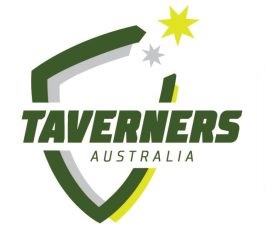
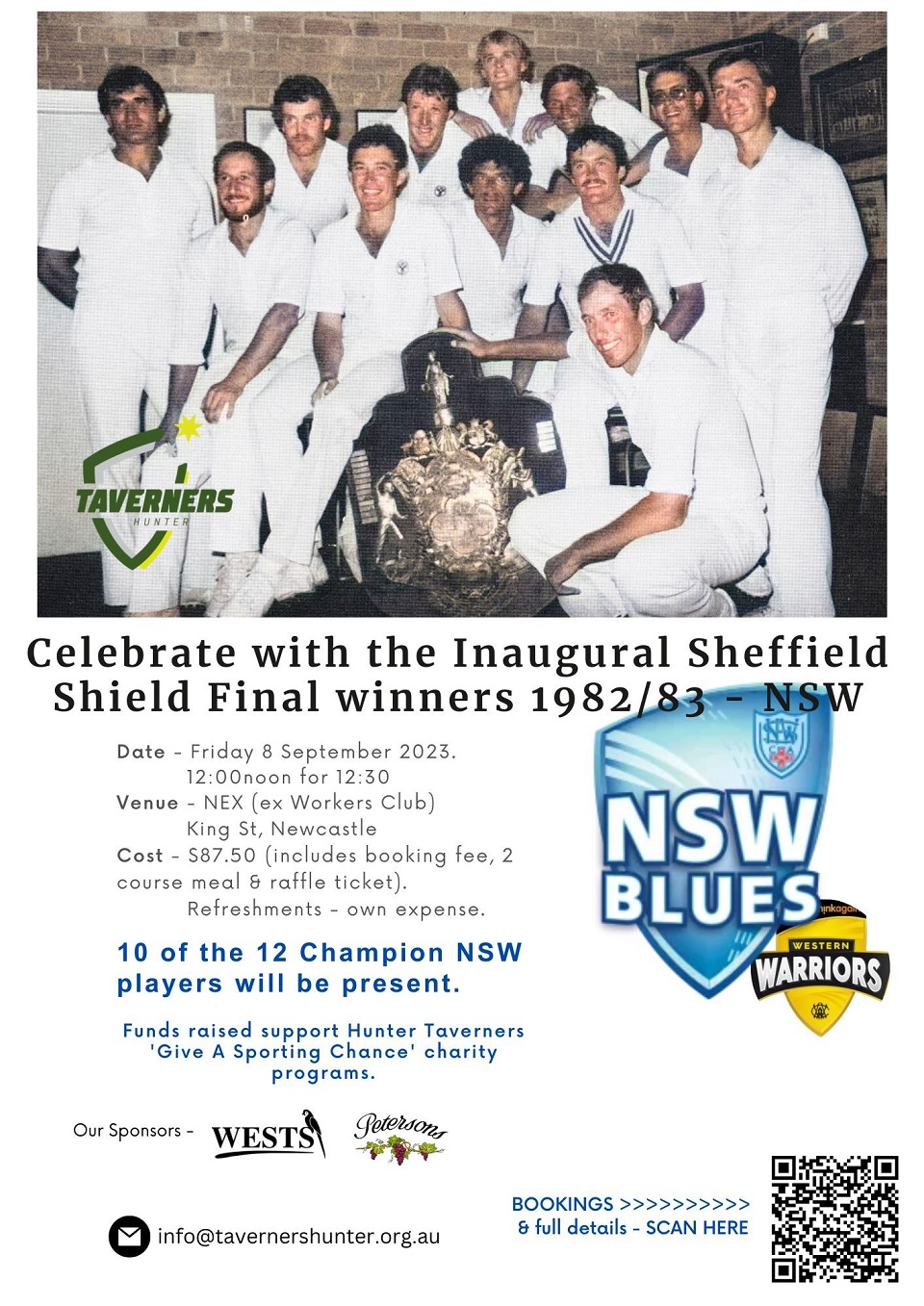
Hunter Taverners - NSW Sheffield Shield Blues 1982-83 Champions lunch

Hunter Lord's Taverners
Newcastle, New South Wales, Australia
0 Likes
0 Followers
0 Followers

Hunter Taverners - NSW Sheffield Shield Blues 1982-83 Champions lunch
All 12 members of the 1982/83 Sheffield Shield winning team at Lunch on Friday September 8.
Hosted by Patron of Hunter Tavs, Rick McCosker in Newcastle.
Winners of the FIRST Sheffield Shield Final: NSW v WA
https://www.cricconnect.com/profile/1194/hunter-lords-taverners/blog/1428/hunter-taverners-nsw-sheffield-shield-blues-1982-83-champions-lunch
Read More



